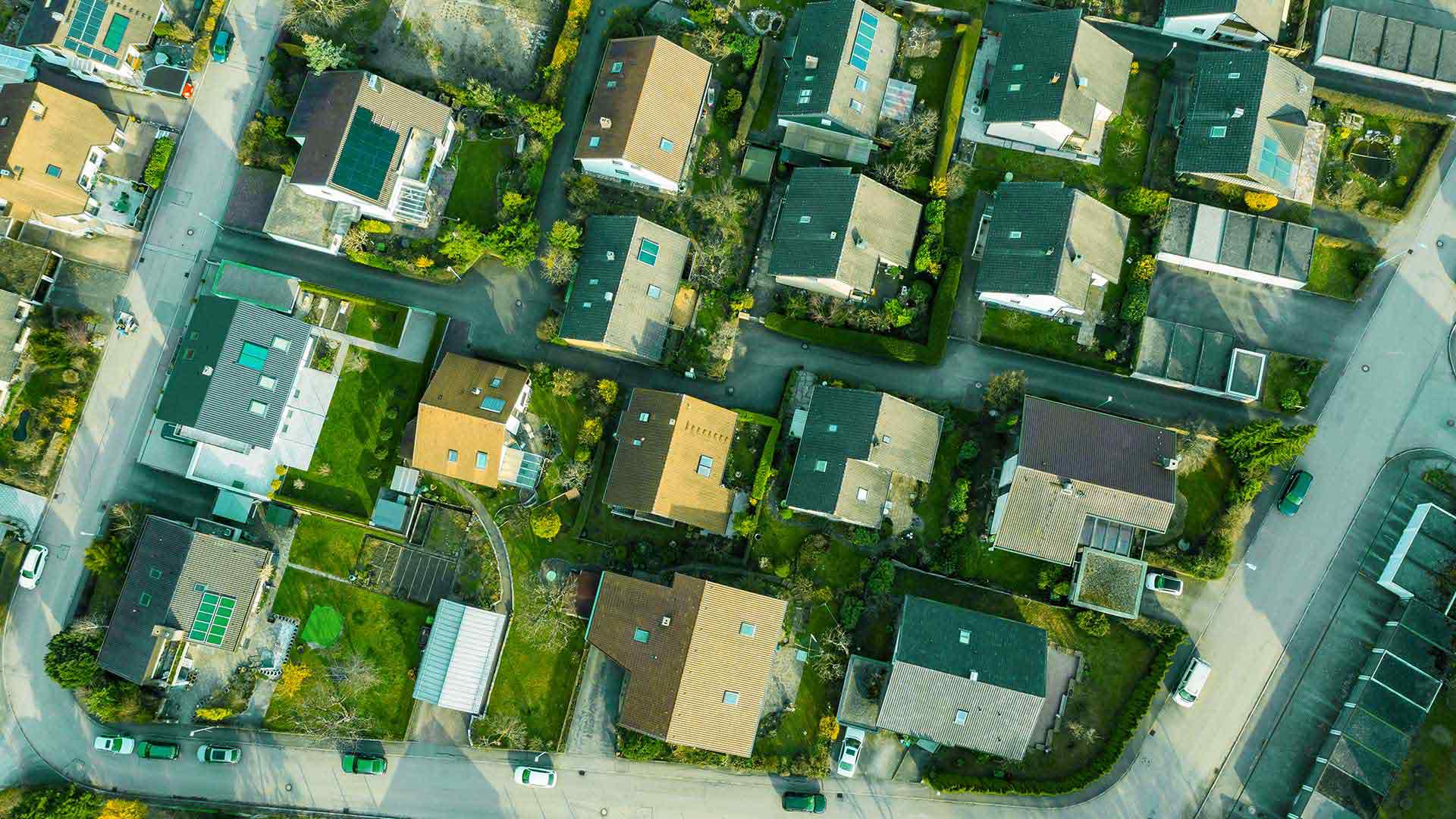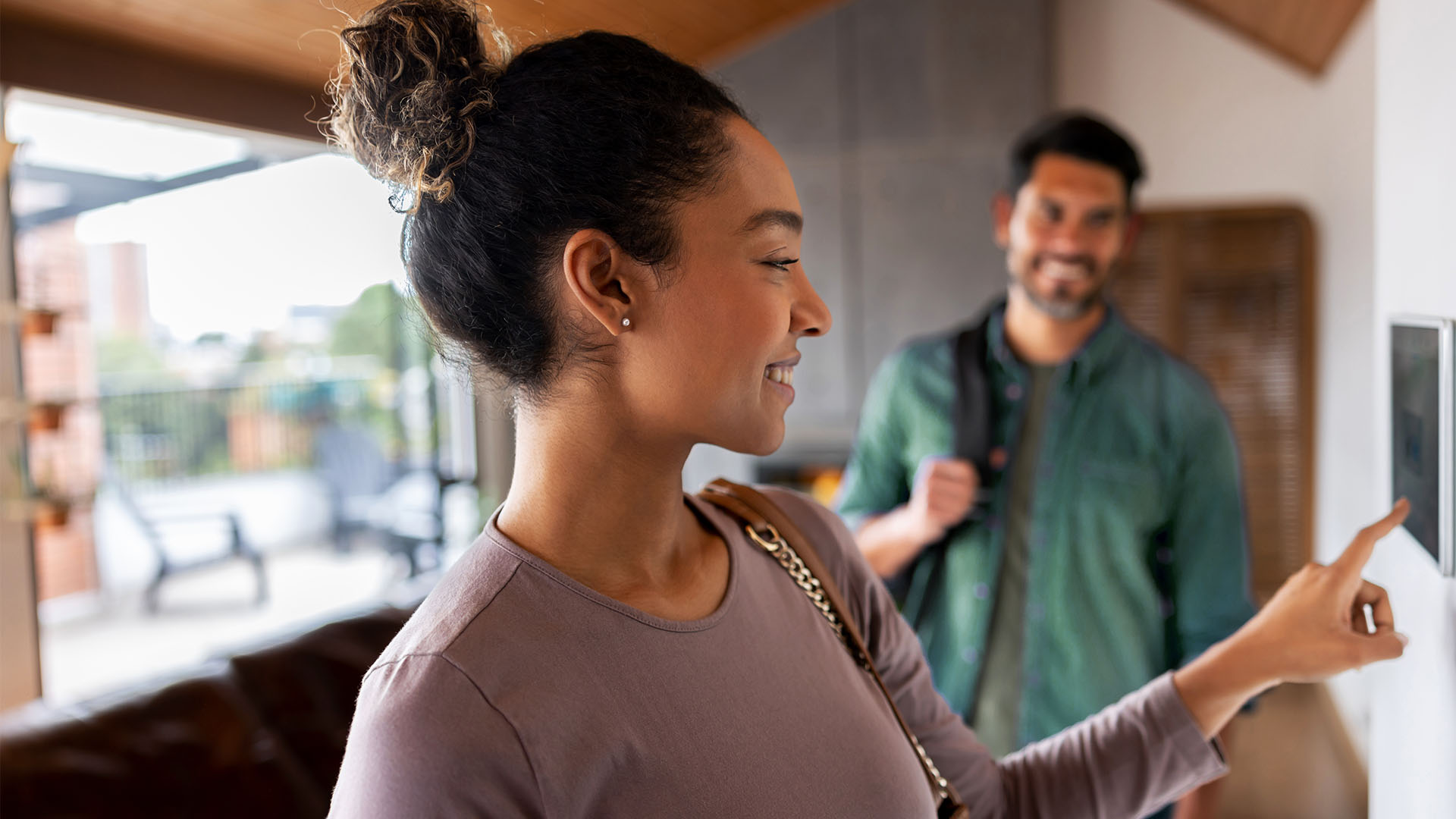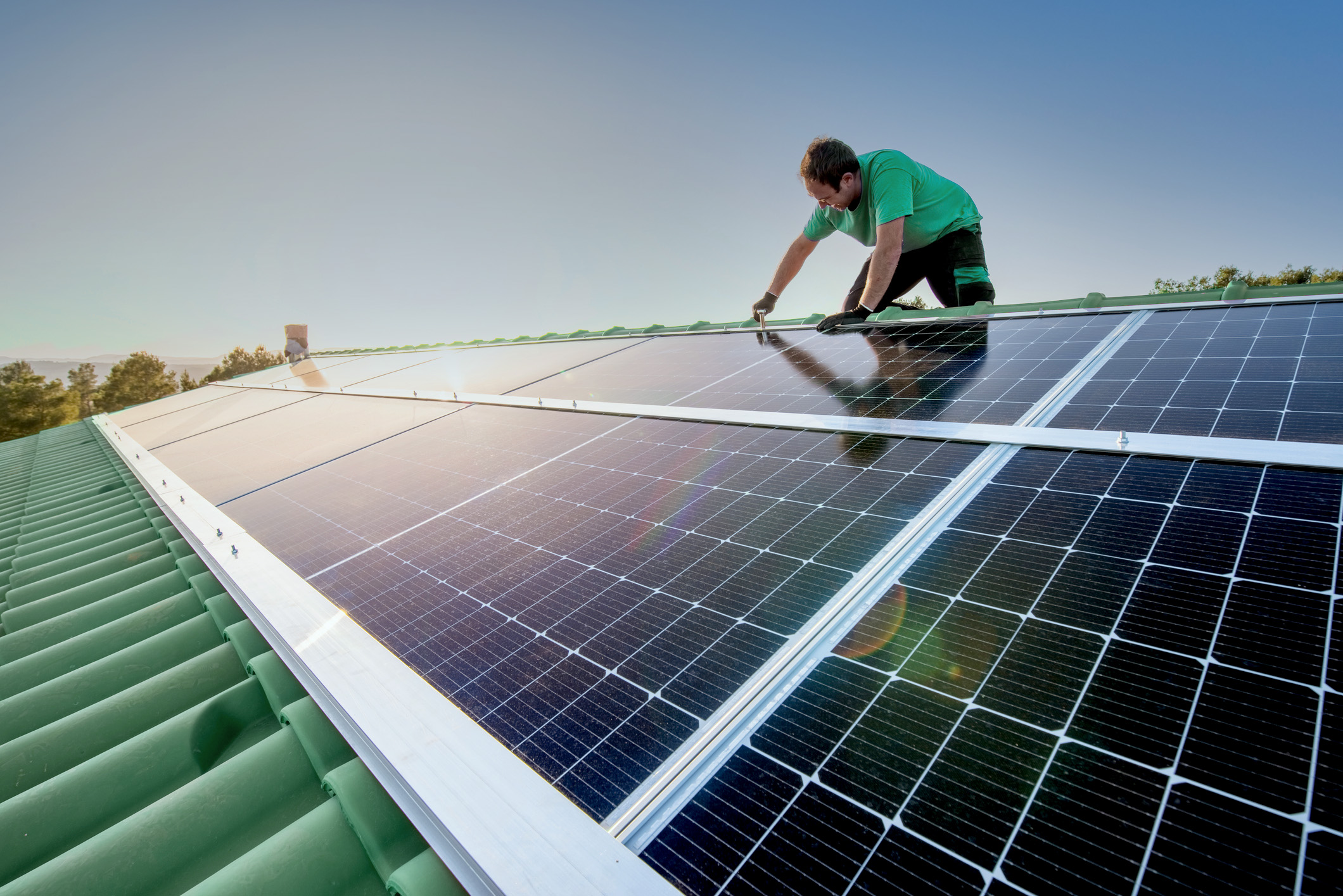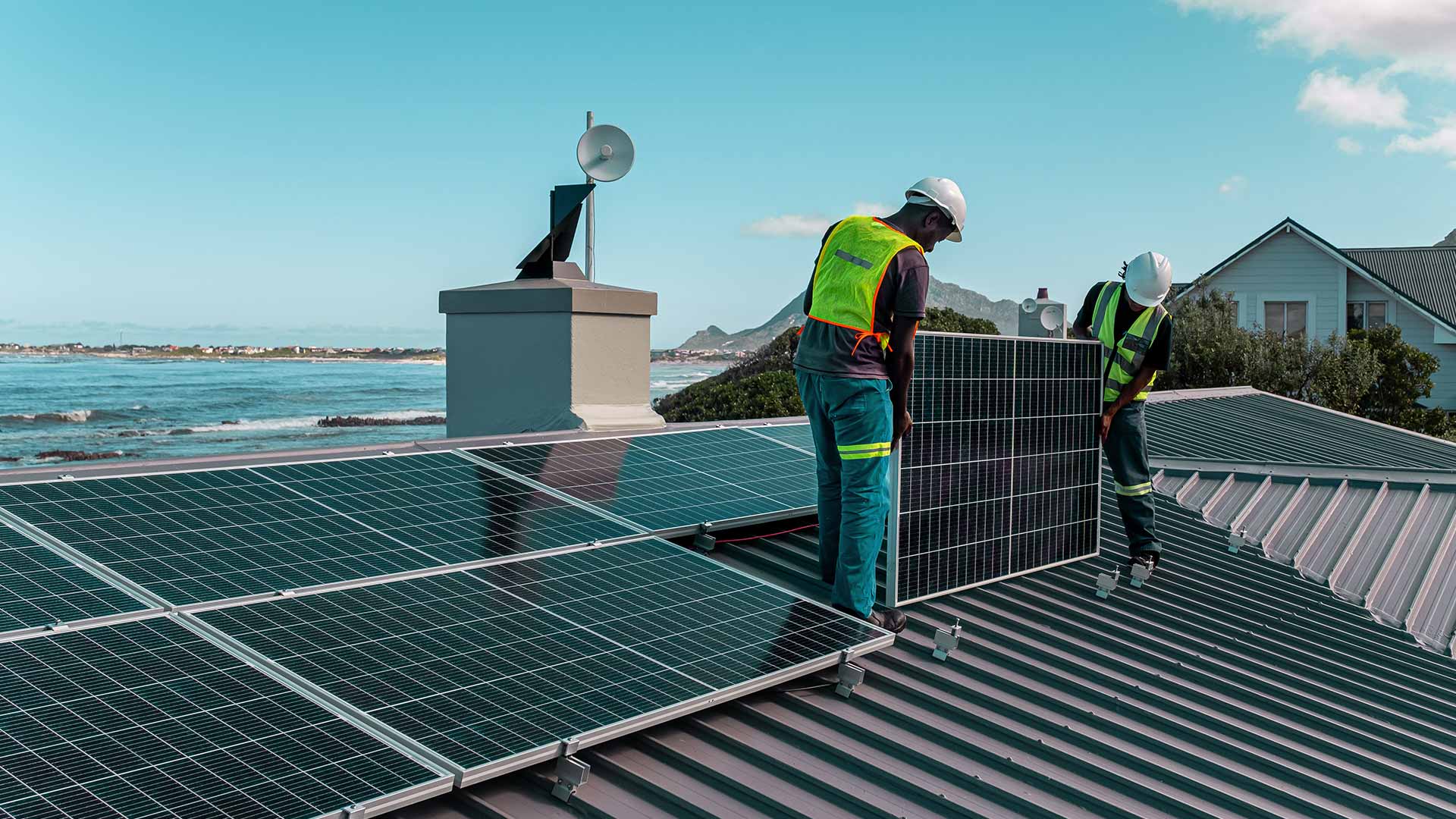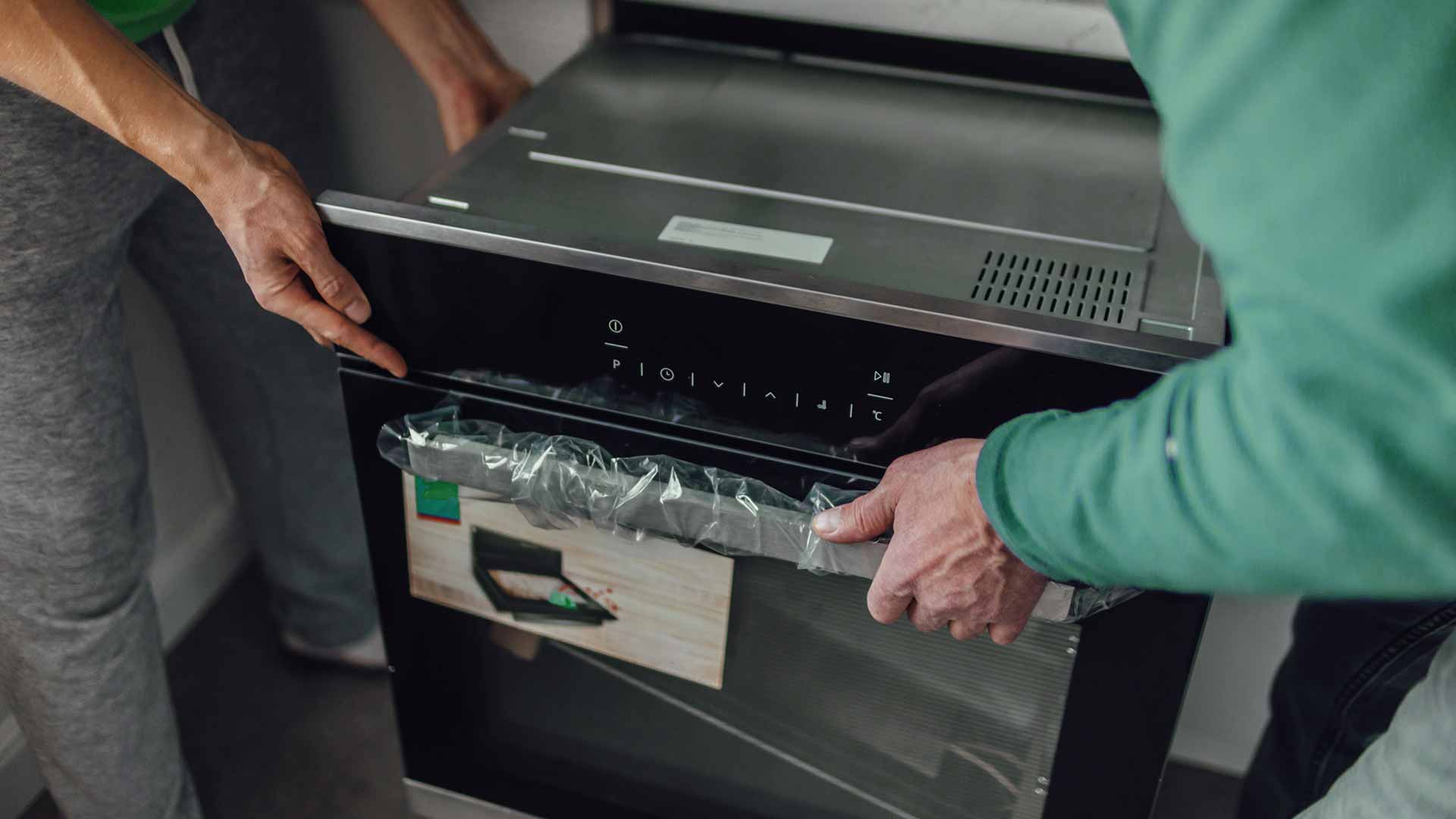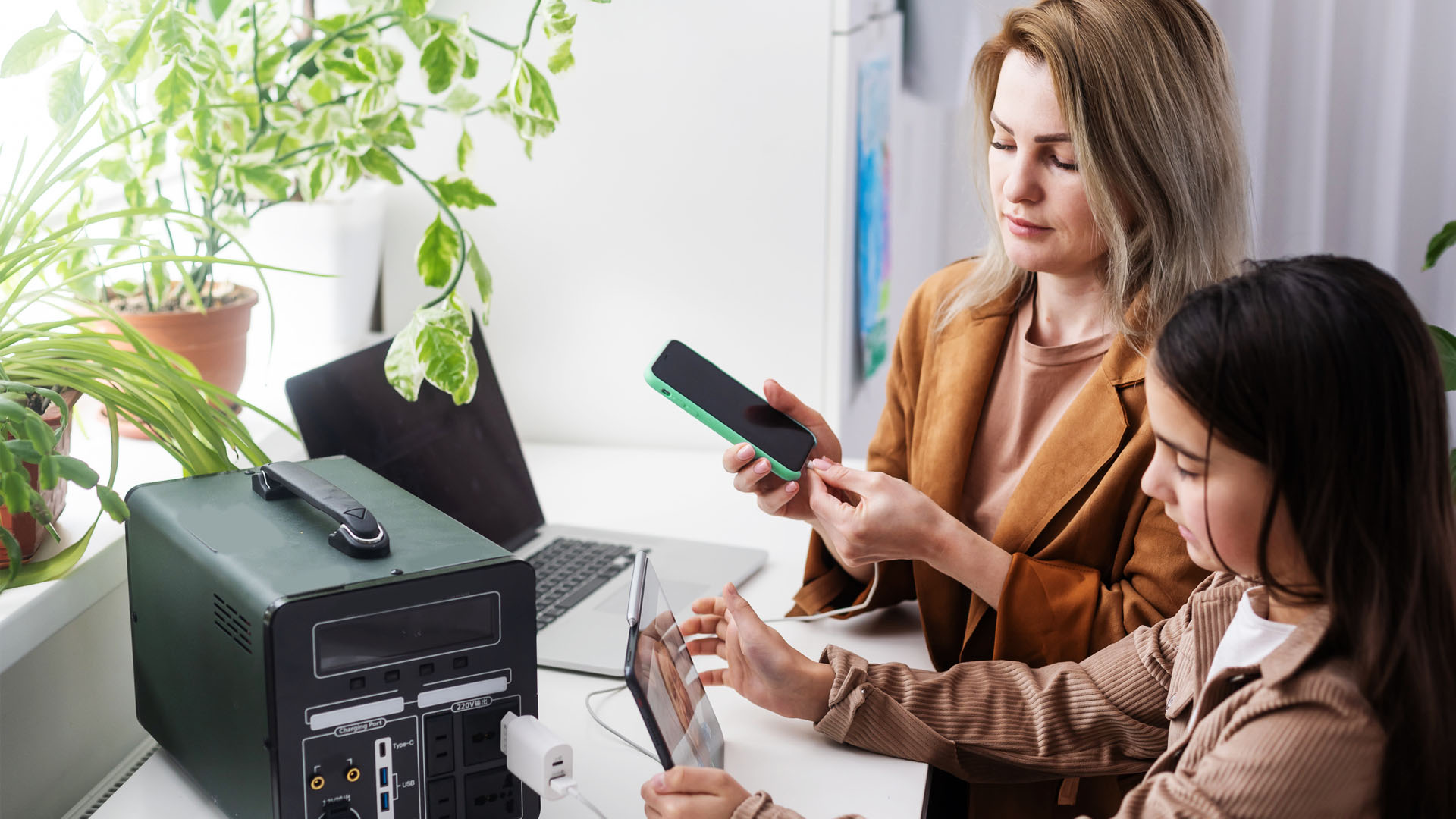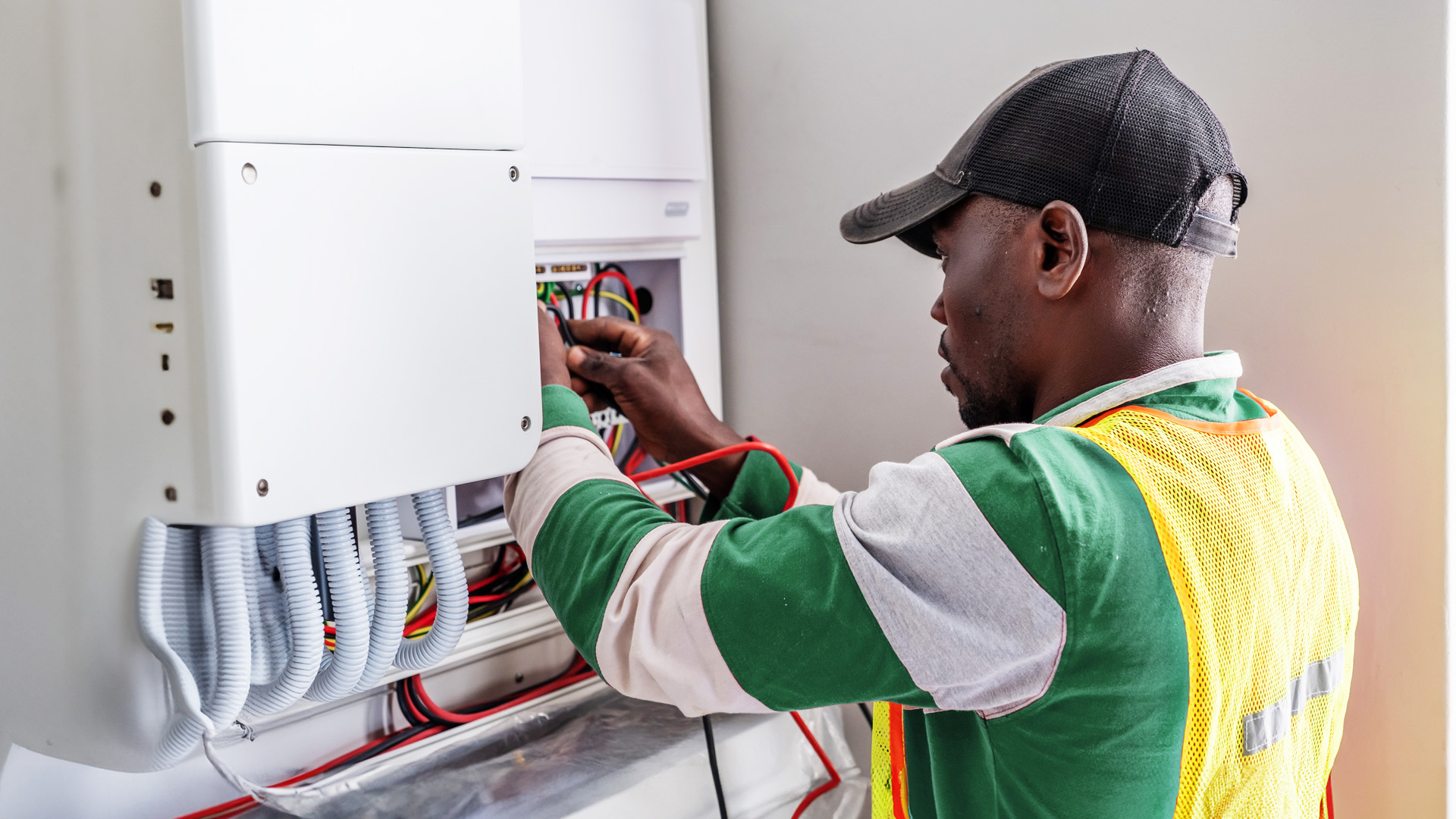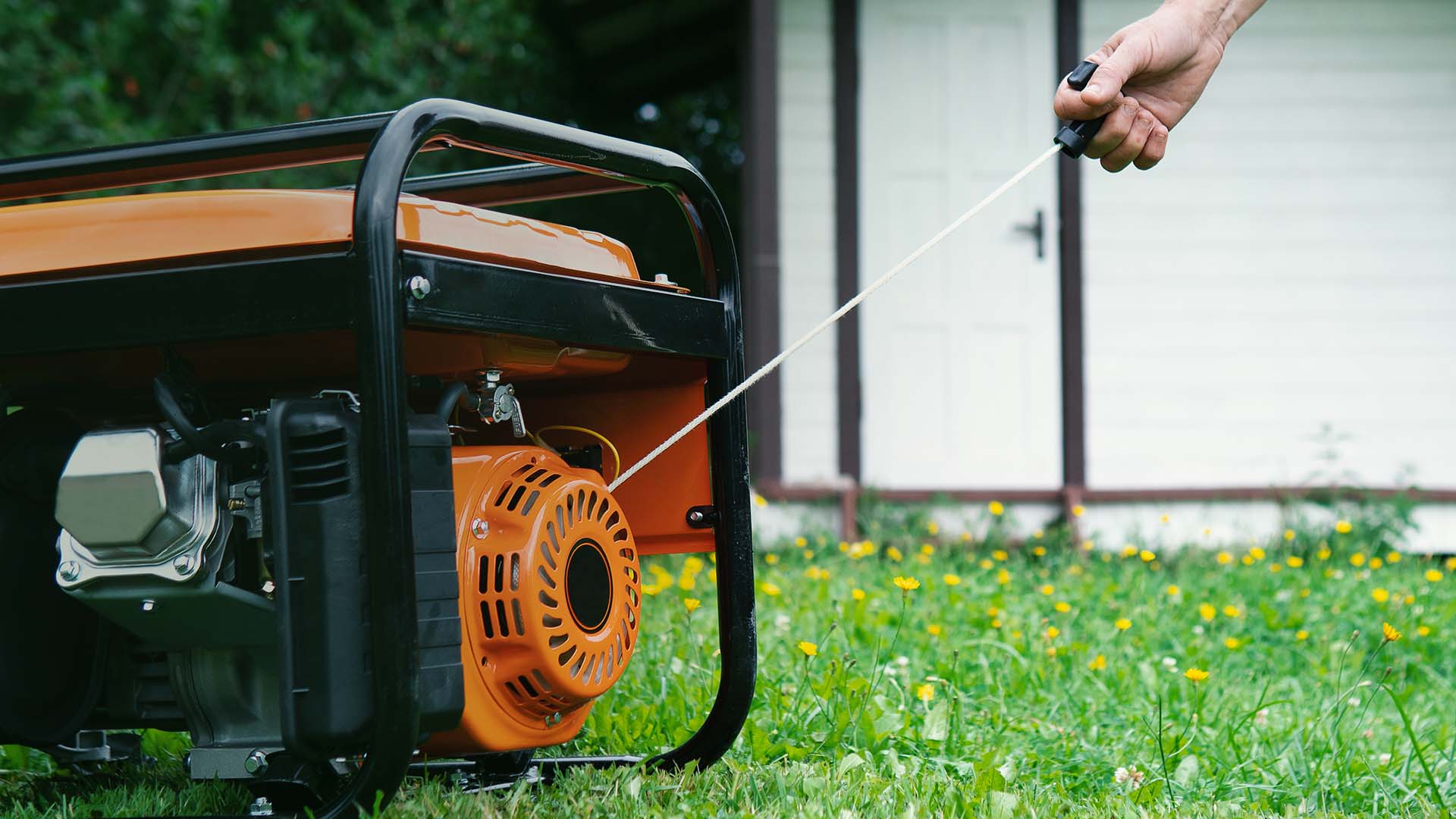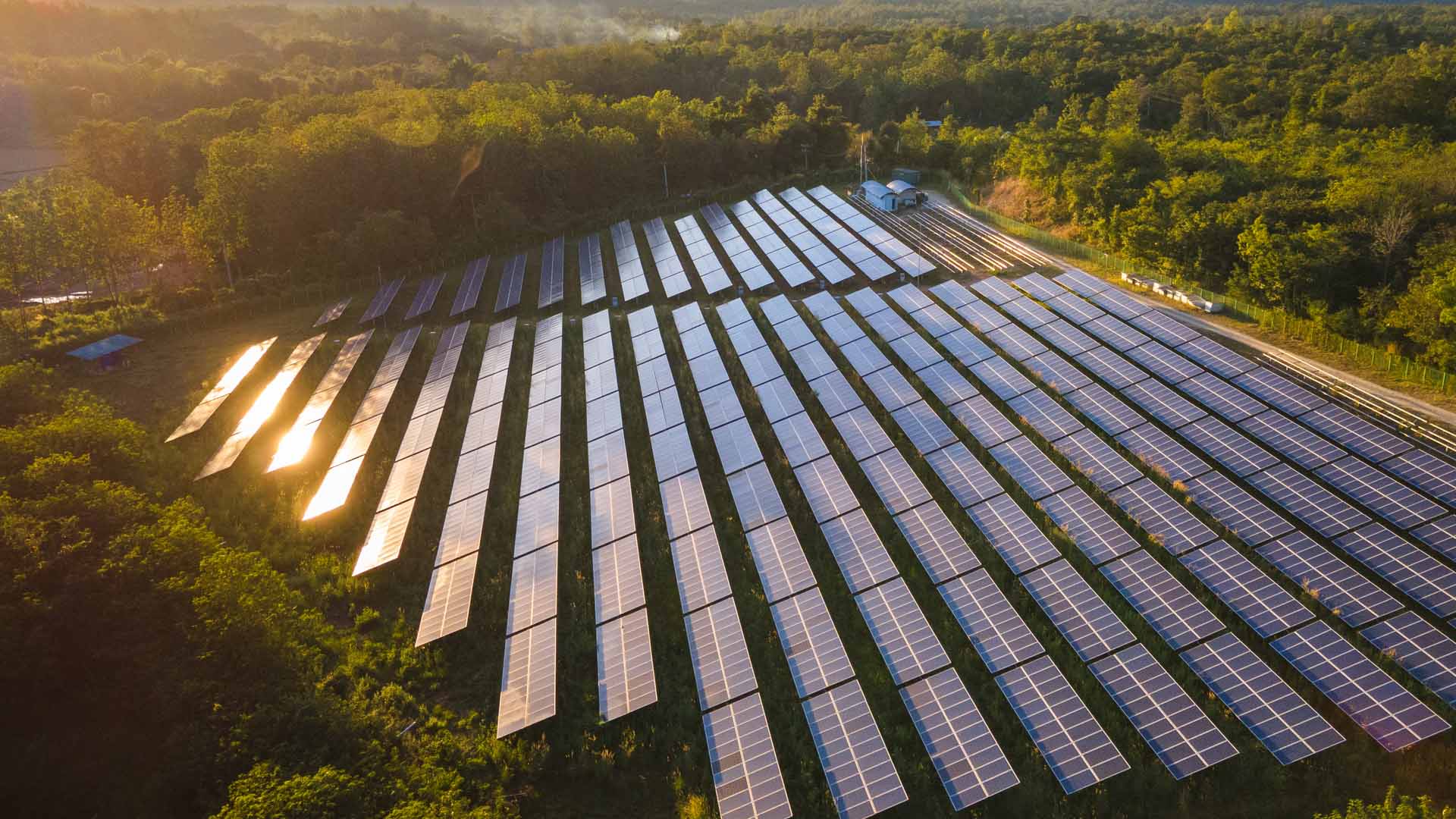A home solar-power system is the ideal way to cut your monthly electricity bill and free yourself from ongoing blackouts on the national electricity grid. But moving away from the grid comes at a cost. A completely off-grid solar system can cost a few hundred thousand rands because you need to account for spells of bad weather by always having sufficient reserve battery capacity.
If a cheaper grid-tied system can provide for all your needs, on the other hand, going solar will cost significantly less. Fortunately, whether you choose to disconnect from the grid completely or go with a grid-tied system, it’s a conversion you can scale up in stages so that it’s more affordable.
You can lower the initial cost if you start by installing a simple grid-tied system of solar panels that excludes batteries – the most expensive components of a solar-power system. This solution will replace grid electricity during the day when you have enough sun to power your home, but at night you’ll have to revert to power from the grid. If batteries are required to provide electricity during load-shedding and other grid blackouts, they can be added at a later stage.
In most cases residential solar installations use grid power, batteries and solar panels. These are referred to as hybrid solar systems and are a convenient and cost-effective solution that saves money on electricity bills and offers uninterrupted power supply during load-shedding.
You can consume less electricity if you install appliances that are either more energy-efficient or don’t rely on electricity to operate. Making these changes will benefit you in the long run, but you need to include all these upfront costs in your budget and financing when making the shift to solar. One of the immediate benefits of switching appliances to more energy-efficient or non-electric alternatives is that you need less electricity to run them. This means you may end up needing a smaller (and therefore less expensive) solar system.
Your savings on the system could help offset some of the often forgotten costs of a solar conversion.
4 often-overlooked costs of going solar
1. Solar-ready home appliances
Large, energy-hungry appliances make the biggest demands on household electricity usage, with modern conveniences like a hot meal and a hot bath topping this list. One solution is to replace an electric stove with a gas stove or more energy-efficient electric cookers. You can rely on the sun to heat your water with a solar geyser or install a gas geyser for instant hot water around the clock.
If you’re using bottled gas, you’ll need at least 2 bottles, so you can keep a full spare
Your geyser accounts for an estimated 30% of your electricity usage, so installing a solar or gas geyser is an effective way to cut your monthly demand. The cost of solar geysers differs according to brand, size and the technology used, but you can expect to pay between R5,000 and R20,000. Gas-burning instant water heaters are available in the R2,500 to R10,000 range.
When it comes to cooking, a 1,600W air-fryer requires less than half the power of a 3,400W electric oven and it cooks food in less time, so it can be ideal for a solar conversion. Although an induction cooker needs more power than traditional hotplates, it draws power for a much shorter time. It might use about 1,800W, compared to the 1,200W of a stovetop hotplate, but you don’t have to wait for the plate or the pot to heat up – the food begins cooking the moment you switch on the induction hob. If you go this route, discuss the power requirements with an expert when planning the size of your installation, so that you include enough solar panels to power these appliances.
You may spend more upfront to access energy efficiency, though. A traditional stovetop hob costs between R2,000 and R6,000, but an equivalent 4-plate induction hob can cost anything from R5,500 to R20,000 or more. On the other hand, an electric oven will usually cost more than R4,000, but you can get an air fryer that does the same job priced in the R2,000 to R4,000 range.
Gas stoves can also get pricey, ranging from under R5,000 for a small free-standing stove to more than R20,000 for larger, high-end units. The price will depend on the brand and size, and whether you want a gas oven as well as the gas hob. Some cookers have gas plates only, with electricity used to power the oven. Combining a gas hob with an air fryer to serve as an oven may be a smarter choice during a solar conversion.
And don’t forget the cost of the gas. If you’re using bottled gas, you’ll need at least 2 bottles, so you can keep a full spare and switch to it immediately if the first bottle runs out while you’re using it to cook or heat water.
2. Installation and compliance certificates
Regulations require a solar or gas geyser to be installed by a certified installer. The costs will depend on a variety of factors, so be sure to get an accurate costing before your installer starts the work. Basic installation by a certified plumber, who must issue a certificate of compliance for the installation, could cost around R5,000.
Don’t forget the cost of protecting your new solar installation against accidental loss or damage
A gas stove must also be installed by a professional gas installer to ensure that you can use it safely. This shouldn’t be a complicated process, but it does have to comply with very specific safety regulations. Your installer must therefore also provide you with a compliance certificate as proof that the installation was done correctly.
3. Replacement and maintenance costs
Like all equipment used constantly, your home solar system will need maintenance. Electrical and electronic components can break down for known and unknown reasons, so you need to keep an eye on how your system is performing and have it professionally serviced when required. Some companies offer an optional service plan with installation, which is similar to a car service plan. It covers monitoring and reporting system performance, repair and warranty management, cleaning of the solar panels, and system inspections.
Apart from individual components that can fail, your batteries will certainly degrade over time – they are not designed to continue working at full capacity forever. Depending on your chosen system, a good-quality lithium-ion battery will normally come with a 10-year warranty. Your battery might continue working well for much longer, but at some stage the constant charging and discharging will reduce its effectiveness so that it doesn’t store as much power as you need.
Depending on what batteries you use and how many your system requires, replacing them could set you back R25,000 to R50,000 or even more. It may become cheaper in future, as battery technology improves, but it’s a cost you need to factor into your solar budget every 10 to 15 years.
4. Insurance on the system
Don’t forget the cost of protecting your new solar installation against accidental loss or damage. A surge-protection device should be installed with your system, but this won’t cover all the potential ways in which the system can be damaged. These include fire, severe weather, or parts of the system being stolen.
Your monthly insurance premium will depend on many factors that are unique to your home and your relationship with your insurer. But it makes sense to absorb this extra monthly cost, because it means you won’t be left facing a huge bill for repair or replacement if your system gets damaged.
We offer very competitive home solar financing options in partnership with several service providers that can help you get partially or fully off the grid, through asset financing or your home loan.
Disclaimer
Please note that all costs and financing options quoted in this blog were correct at the time of publication, but are subject to change without notice. Although we update the blogs regularly to keep the information up to date, clients are advised to check current costs and finance options with service providers before making any commitment to solar installation.
